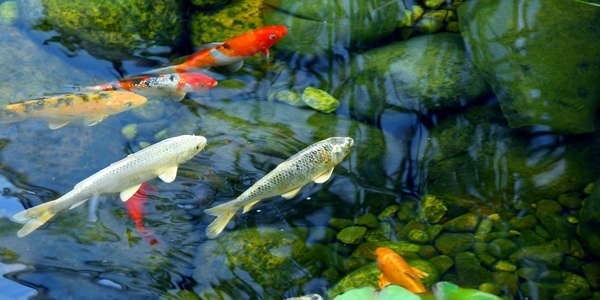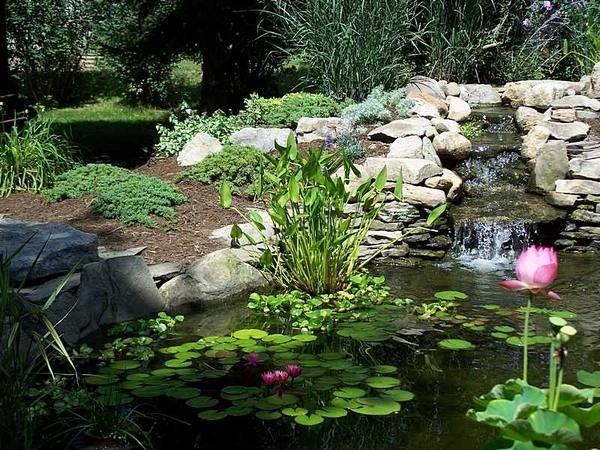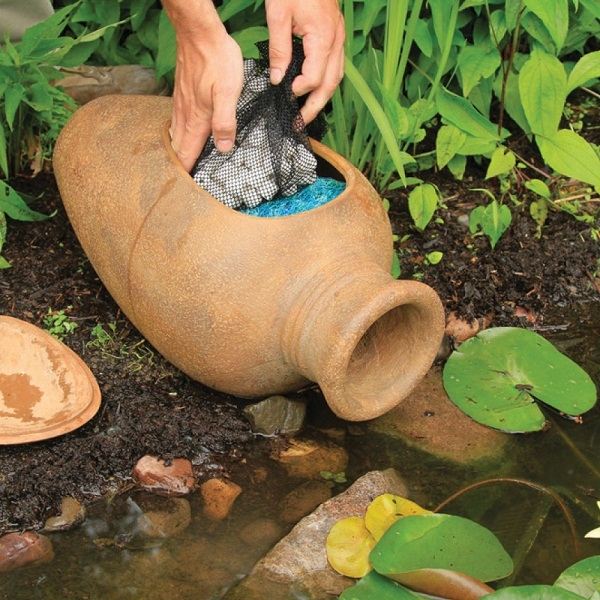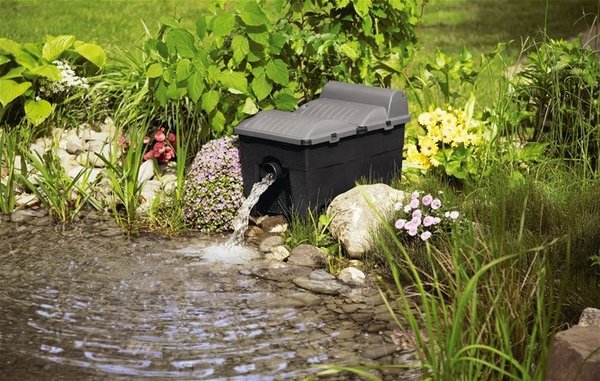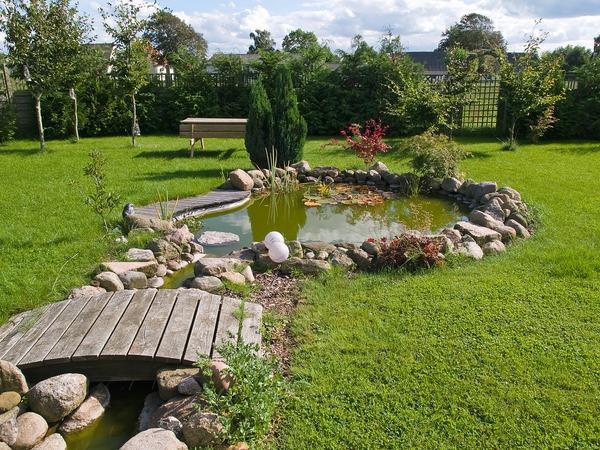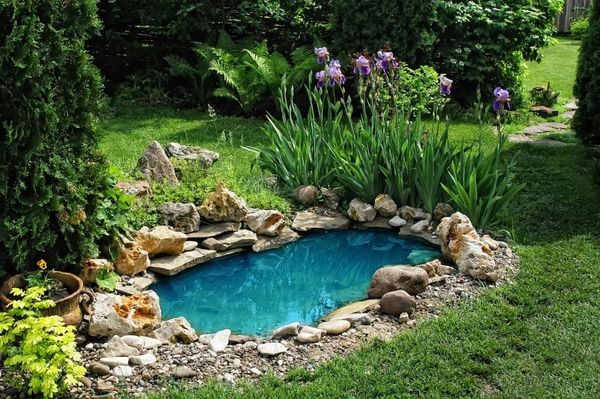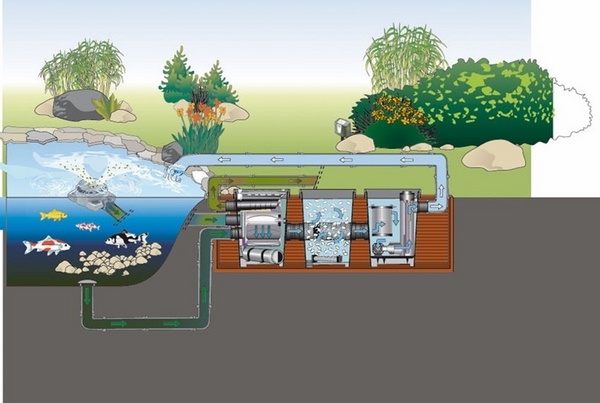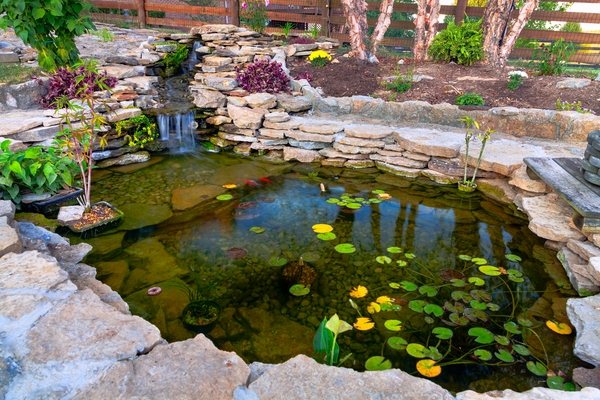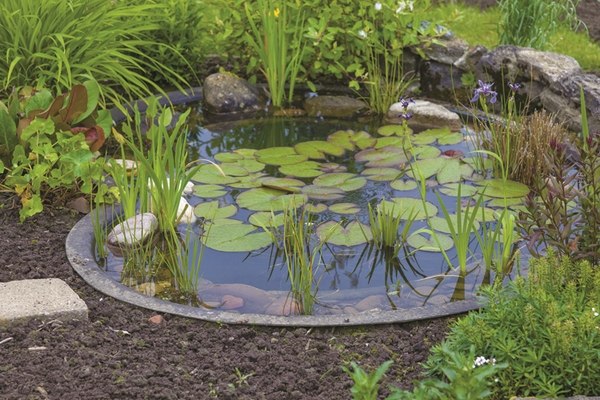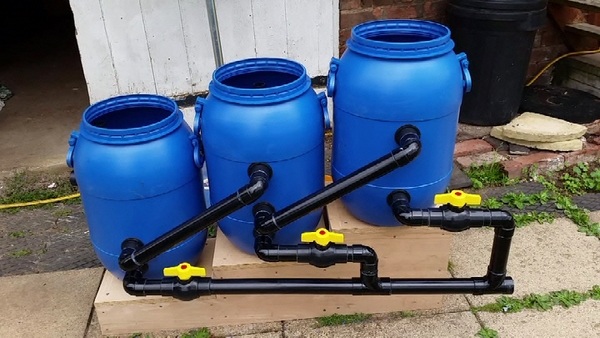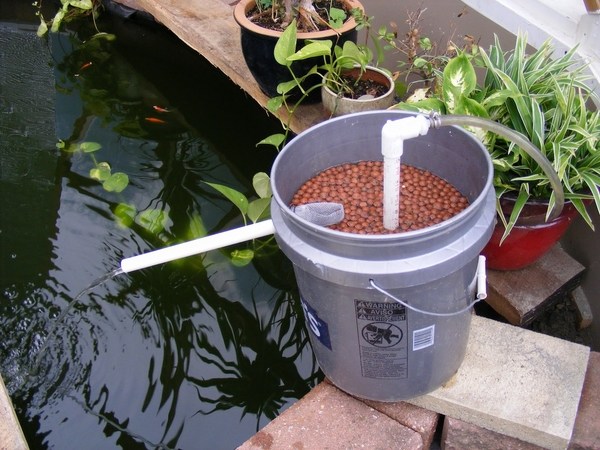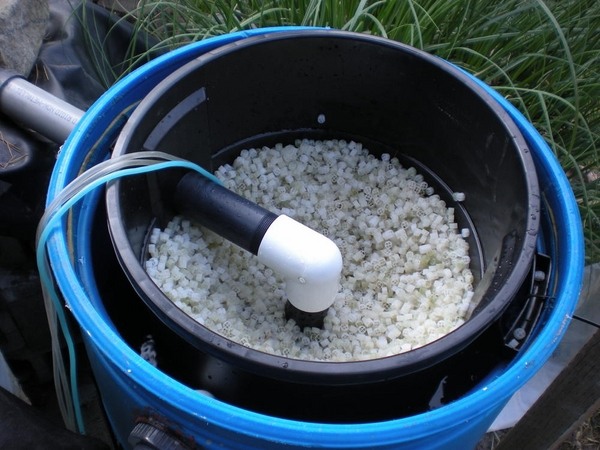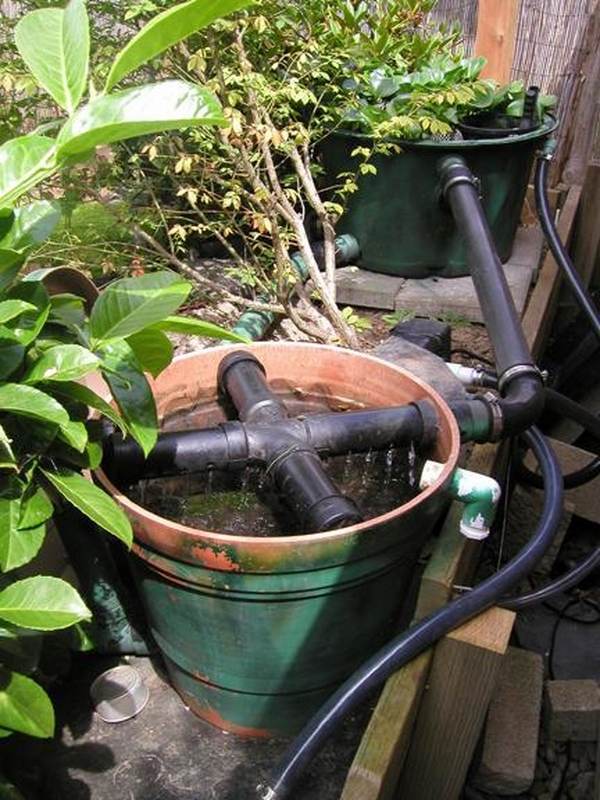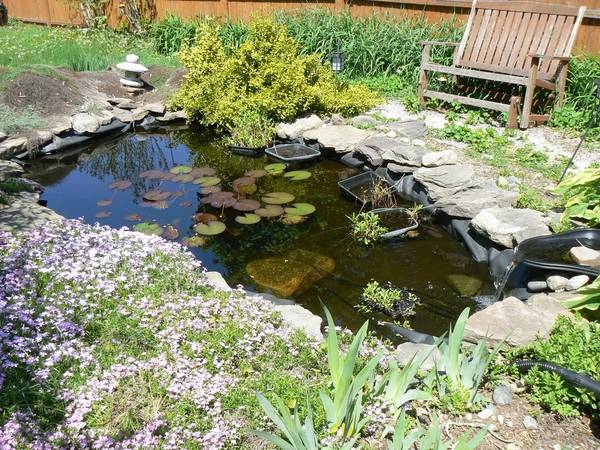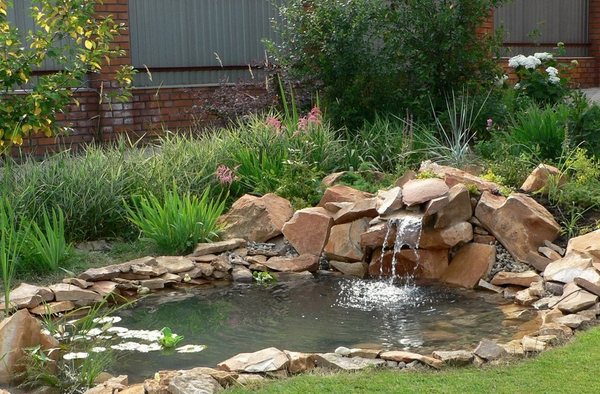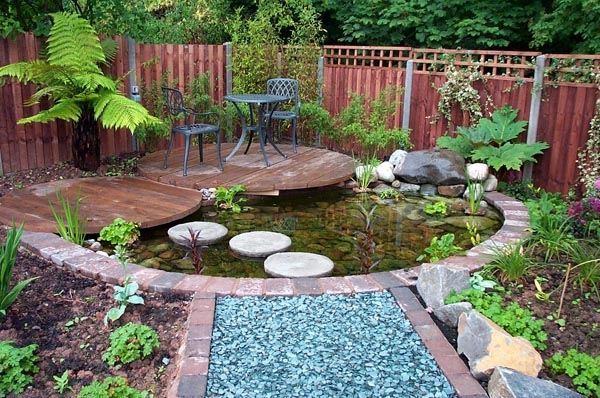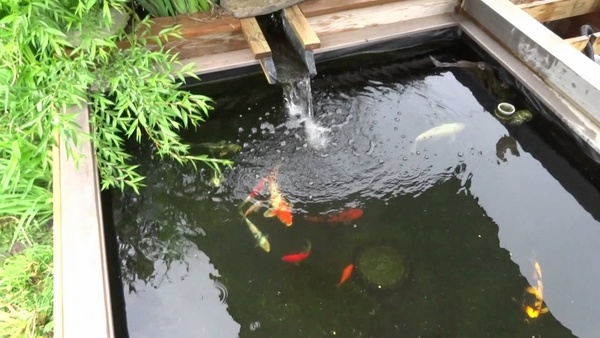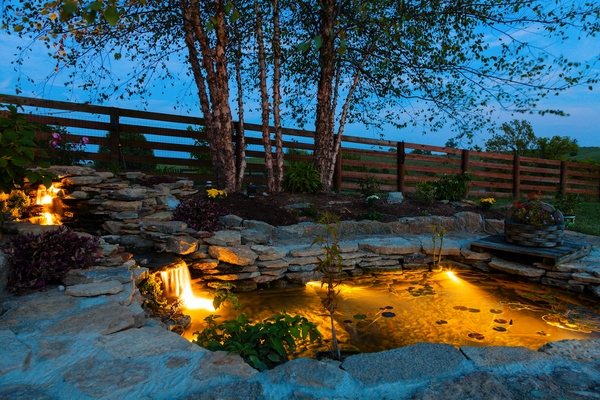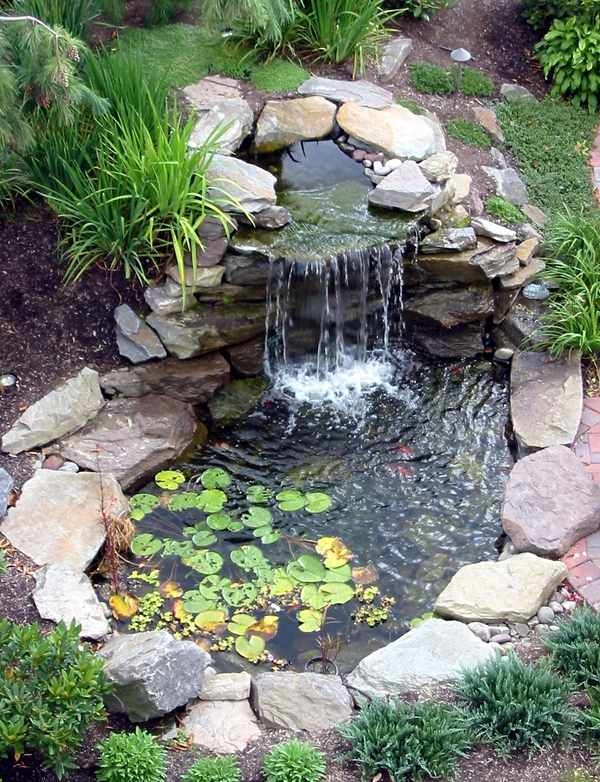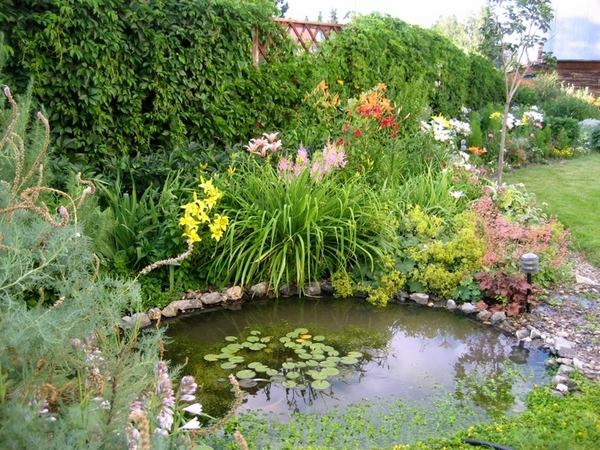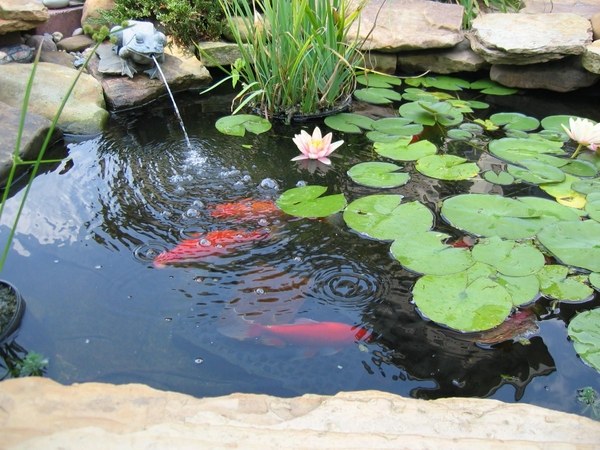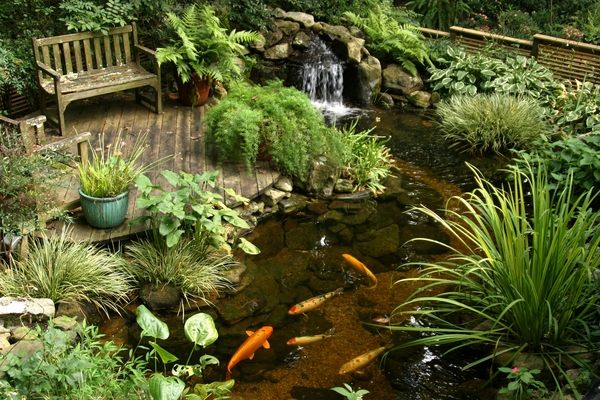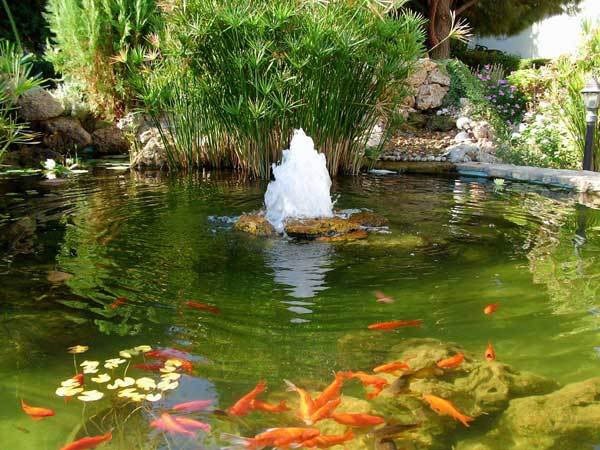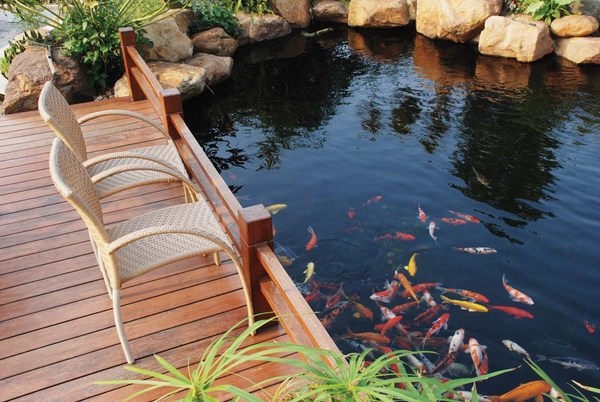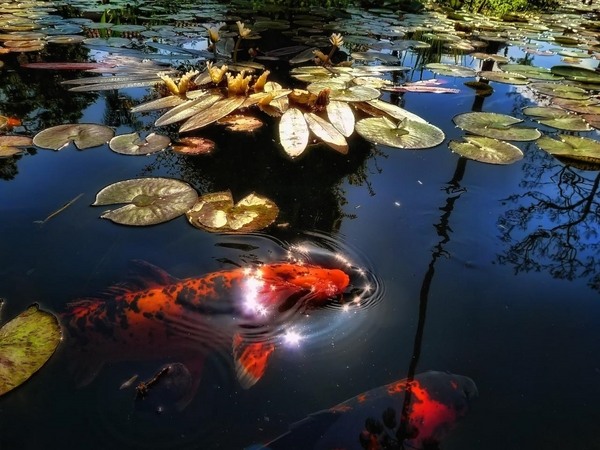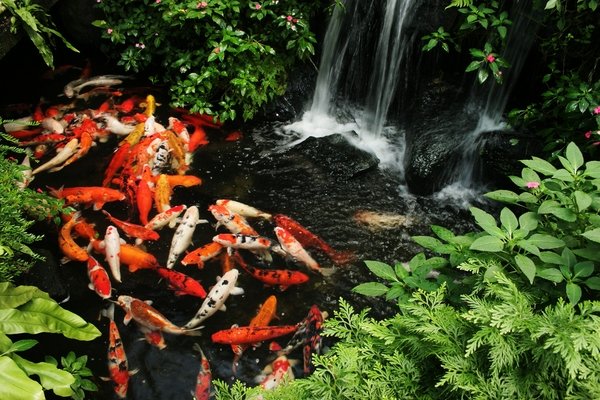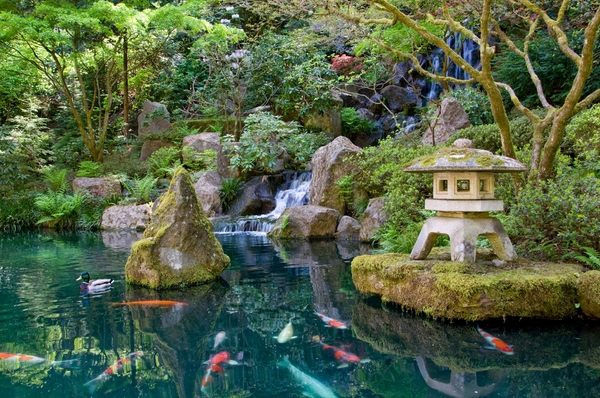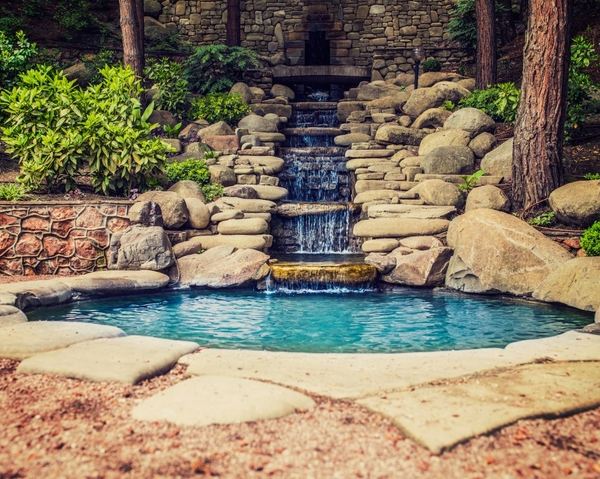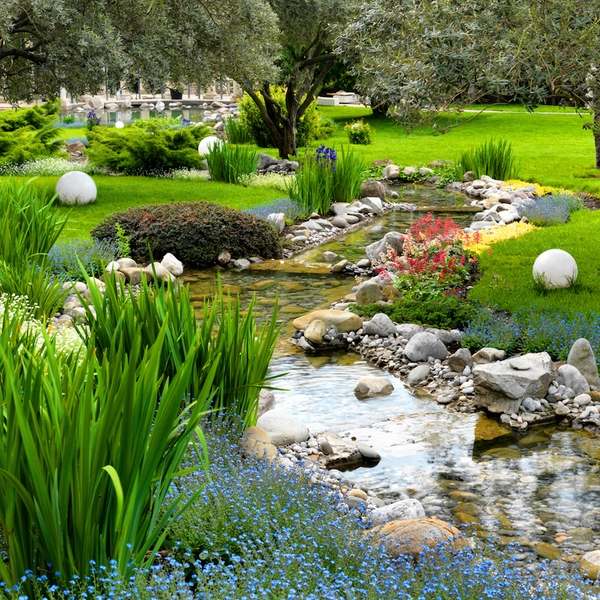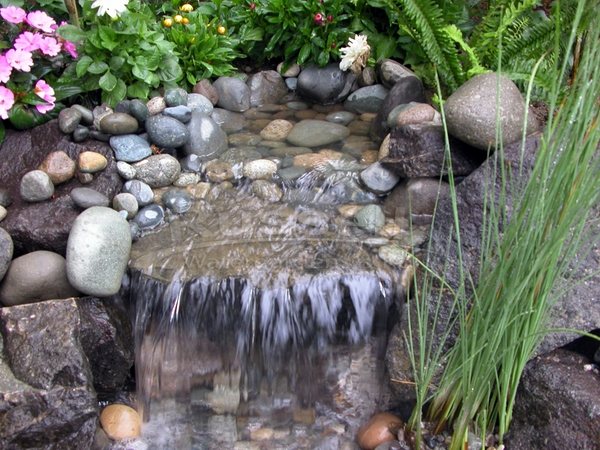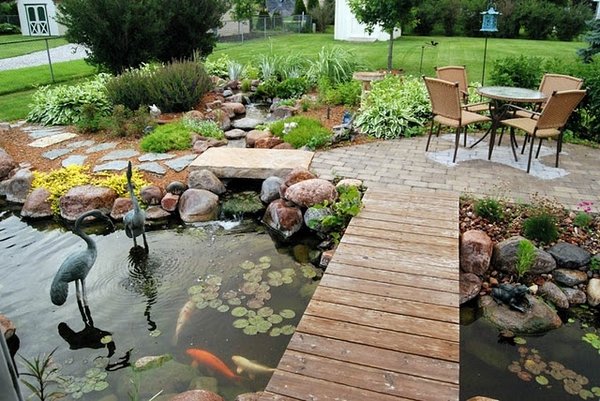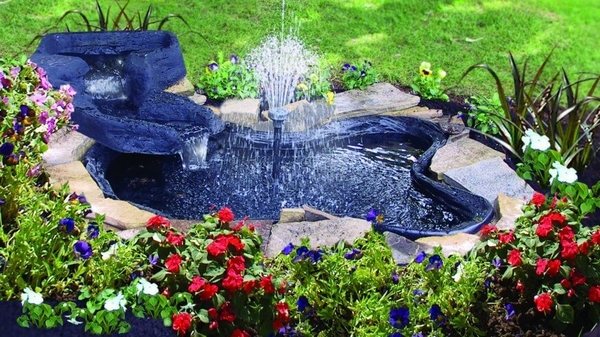DIY pond filter design ideas will be very useful to people who want to have a garden pond or a koi pond and enjoy their water feature. A garden pond is a spectacular feature which adds a lot of charm to the outdoor area. There are many different designs and often garden pond designs combine a waterfall or a fountain. However, building a garden pond is only the initial step. When you want it to function properly, you need to take care and maintain your pond and one of the most important elements that you need to consider is the pond filter which is a must for every garden pond.
Why do you need a pond filter? How to choose the right one? What is better – to buy a filtering system or opt for a DIY pond filter? There are homeowners who believe that once they have constructed their pond the job is done and from that moment on it is Nature’s job to maintain it. However, garden ponds do require care and maintenance, as they are artificial, despite the fact that the design can make them look as if they are a part of the natural landscape.
Why do you need a filter for the garden pond?
Why water does not stay clean and why does your pond need a filter? There are many factors which affect the purity of the water. The location is on the first place. Garden ponds are usually exposed to many hours of sunshine which creates favorable conditions for algae growth. Another reason that causes problems is that the water is not disinfected or is not properly disinfected. When the garden pond is not equipped with a pump the water is still which is also beneficial to algae growth. When the it is surrounded by a lot of plants bacteria also grows or when you feed the fish too generously uneaten food decomposes and pollutes the water. It is obvious that there are many and different reasons for water pollution which brings us to the point of the necessity of a filter. When you are not able or you are not willing to buy it, you can opt for a DIY pond filter design and make a filter system on your own. Either way, the it has to be able to clean the volume of water.
DIY pond filter design and most popular filter systems
Let’s have a quick look at the different types of pond filters and how they operate. This is very useful to those who would choose a DIY pond filter design as this will determine the size and the equipment of the system.
Mechanical or physical filtration – these filters clean the water from various debris, including fallen leaves, dead plants, free-floating algae and so on. Mechanical filters will prevent clogs and reduce the amount of decaying materials. The principle of functioning is based on straining the water through a number of sponges or pads with varying densities and thicknesses. When you plan to a DIY pond filter design, you need to know that mechanical filters require regular maintenance and have to be cleaned at least one a week.
Chemical filters are based on purifying the water by removing organic and inorganic pollutants, toxins, etc. Chemical filters are commonly used in aquariums and are a good solution for garden ponds with a lot of fish which leads to high levels of ammonia. The filtering system uses specialized filters like carbon and resins, usually in a loose, bagged, or pad form.
Biological filters guarantee the natural balance in the pond and maintain the natural environment. Biological filtration is the process that removes the excess ammonia by using nature’s nitrogen cycle to detoxify organic waste products. When the ammonia levels rise a colony of bacteria that feeds on ammonia grows in the filter and helps to break ammonia to nitrites. The market offers options that combine one or all of the filtering systems which is a guarantee that the water will be clean at all times.
UV clarifiers (ultra violet clarifiers) can be a separate unit or a part of a biological pond filter system. It is an electrical unit and water is pumped through it before entering the filter itself. Ultra violet clarifiers reduce harmful bacteria in the water by emitting U.V. light which makes the algae cells cluster together and then being eliminated by the biological filter. Remember to never look directly at an illuminated U.V. bulb.
DIY pond filter design – how to choose the type of filter
Special filters handle water volume in different ways. The two main types of filtering systems are pressure filters or flow filters or submersible filters and external filters. Whether you opt for a DIY pond filter design or you buy a filter system, the type will depend on the size, the layout, accessibility and maintenance of the pond.
Pressure filters mechanically push the water through the filter where it is cleaned by large particles and biological contaminants. The filtered water is then circulated back into the pond. These filters are suitable for small to medium size ponds with few or no fish where the pump is in the water. Submersible filters are easily installed and offer the advantage of being practically invisible as they are placed under water. The filtration is effective and the filter system requires minimal plumbing and maintenance.
External filters are installed outside and are suitable for large ponds and koi ponds. They are easily accessible, easier to maintain but harder to hide from the view. Flow filters, also known as gravity filters work with a pump which can be in or out of the water and pushes the water into the top of the gravity filter. After going through the filter system, water returns to the pond under gravity.
DIY pond filter design ideas – useful tips and facts that you need to know
How to make a filter yourself? We shall give you some easy DIY pond filter design ideas which will be useful when you work on a budget. It is quite possible to make one on your own. You only need to purchase a pump. You need a reservoir which can be made of a large plastic container. Here are some useful tips and information that you need to keep in mind when designing your filter.
The size of the filter is calculated based on the volume of water in the pond. Professional filters with self-cleaning system do not require maintenance, but DIY filters working with household sponges should be periodically cleaned and the sponges should be washed. The filter must run continuously, even at night.
Where to place the pump? Experts advise that pump should be placed in the deepest part of the pond. It is recommended that the pump and filter system are located at different locations so that the water can circulate over the entire area. When the water circulates actively it gets saturated with oxygen. Large ponds may require two, three or more reservoirs with filters.
What is a pond skimmer and do you need one? A pond skimmer is an external type of water filtration quite similar to the swimming pool skimmers and is recommended for medium to large ponds with fish. The skimmer is a submersible basket where debris from the surface is collected when the water “overflows”. After that the water is pumped to the opposite side of the pond and it cascades back through a waterfall bio-filter.
When you want to change the water in the pond with new then you need to clean it from debris, algae, decomposed plants and other impurities. Add fresh water and turn on the filtering system immediately.
Aquatic plants play a major role in the process of filtering water. They usually consume the excess phosphorus and calcium, which is the algae nutrition, thus the aquatic plants contribute to the transparency and purity of the pond water.
DIY pond filter design ideas – easy projects
One of the simplest DIY pond filter design ideas is to use a grocery basket or a plastic bucket. Actually any tank with holes will do the job and can be used as a container of the filters. Here is a list of the materials that you will need: a drain siphon, a submersible pump, silicone sealant), two clamps, four thick sponges (or any other material absorbing or retaining dirt), hose of polyvinyl chloride. The layers of sponges are arranged in the container and attached with the help of the sealant. A hole for the drain siphon is drilled so that the water can flow easily in the filter system. The connection of the pipe to the filter body should be secured with a sealant. Make sure that the electrical sockets of the pump are in a waterproof casing.


